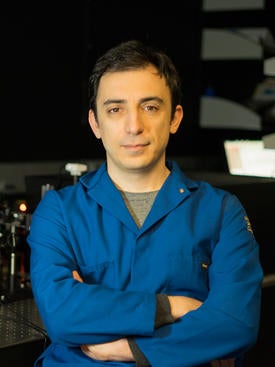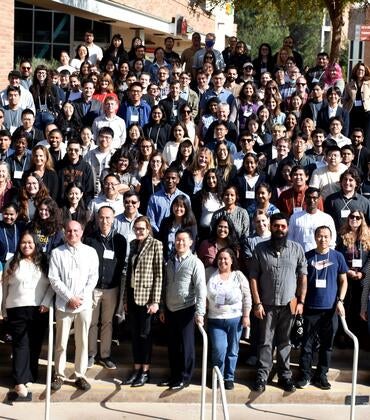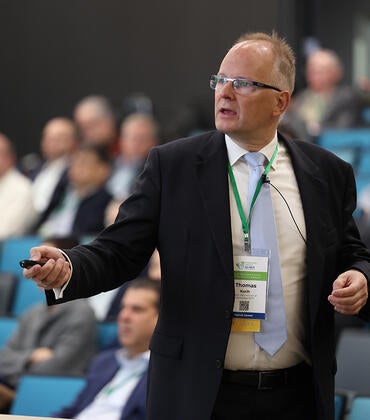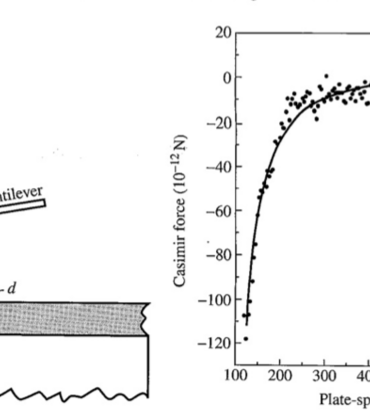Raman spectroscopy, which measures the energy of crystal lattice vibrations in the Terahertz frequency range, has become essential for advanced scientific research and practical applications.
In the physical sciences, Raman spectroscopy helps determine the crystalline quality of materials and identify the phase transitions. Airport security uses Raman spectroscopy to distinguish sugar powder from cocaine, which look similar but their atoms vibrate with different frequencies. Art experts can use Raman spectroscopy to tell if a painting is the old original or a recent copy by determining the composition of pigments.
Brillouin – Mandelstam spectroscopy is a type of spectroscopy that also measures the energy of crystal lattice vibrations, but those with much smaller frequencies, in the Gigahertz range, a thousand times smaller than Terahertz. The smaller energy and intensity of scattered signal detected with a Brillouin spectrometer makes its hardware instrumentation much more complicated.
However, measuring atomic vibrations at this energy range provides a wealth of new information for scientific research and practical applications. For example, Brillouin – Mandelstam spectroscopy allows one to measure energy and velocity of propagation of acoustic phonons – quanta of crystal lattice vibrations that determine the heat conduction properties of materials. It also allows one to study the smallest variations in the magnetic properties of materials induced by changes in temperature, stress in crystal lattices, or other stimuli.
Alexander Balandin, a distinguished professor of electrical and computer engineering, and corresponding author Fariborz Kargar at UC Riverside’s Marlan and Rosemary Bourns College of Engineering have published a review in Nature Photonics that offers insight into ways to design and build better Brillouin – Mandelstam spectrometers and identify uses for them in studies of new materials and heterostructures. They show that with such instrumentation it is possible to detect small changes in the properties of phonons – quanta of crystal lattice vibrations – and magnons – quanta of spin waves.
“Presently, Brillouin spectroscopy is at a similar stage of development and use as Raman light scattering spectroscopy was about thirty years ago. The need for determining phonon and magnon dispersions in novel two-dimensional and one-dimensional materials, nanostructures, and spintronic materials resulted in a rapid expansion of this photonic technique to new material systems,” Balandin said.
Recent years witnessed much broader use of Brillouin inelastic light scattering spectroscopy for the investigation of phonons and magnons in novel materials, nanostructures, and devices. Driven by the developments in instrumentation and the strong need for accurate knowledge of energies of elemental excitations, the Brillouin – Mandelstam spectroscopy is rapidly becoming an essential technique, complementary to Raman inelastic light scattering spectroscopy.
Balandin and Kargar’s review paper describes recent progress in the Brillouin light scattering technique, focusing on the use of this photonic method for the investigation of confined acoustic phonons, phononic metamaterials, magnon propagation and scattering. The work outlines the emerging applications of the Brillouin – Mandelstam spectroscopy for phonon engineered structures and spintronic devices and concludes with a perspective for future directions.
“Brillouin – Mandelstam has proven itself as a versatile nondestructive photonic technique for applications in solid-state physics and engineering research. The capabilities offered by this type of spectroscopy have already resulted in advancements in the fields of low-dimensional magnetic and non-magnetic materials and nanostructures, polymers, biological systems and imaging microscopy. One can foresee that this technique will find even broader use in investigations where handling the small-size samples and detecting elemental excitations with small energies are essential,” Kargar said.
Balandin and Kargar lead a major research instrumentation project and to build the most advanced Brillouin – Mandelstam spectroscopy system in the world at UC Riverside called. The project is funded by the National Science Foundation. The proposed instrument, with a specially designed rotating imaging system and temperature variable stage as well as special image processing algorithms for locating small samples and exact focusing capability of the laser light on them at different angles, will provide the ability to measure energy dispersion of phonons, magnons, and other elemental excitations in the samples with the lateral size as small as 1 micrometer.
“The new capabilities provided by the advanced spectrometer will be essential for many research projects on UCR campus, including our collaborative NSF project with Stanford University in the framework of the Program on Designing Materials to Revolutionize and Engineer our Future (DMREF). It will also be essential for our research of charge-density-wave materials, which we conduct with the U.S. Department of Energy support in a project entitled Physical Mechanisms and Electric-Bias Control of Phase Transitions in Quasi-2D Charge-Density-Wave Quantum Materials,” Balandin said.
The review paper, "Advances in Brillouin–Mandelstam light-scattering spectroscopy," is available here.
Post written by: Alexander Balandin
Thumbnail photo: Surface enhanced Raman spectroscopy samples with water droplets symbolizing the measuring of drinking water using Raman scattering. This photograph is an artistic interpretation of the real measurements. (Cedric Noordam on Wikimedia Commons)





